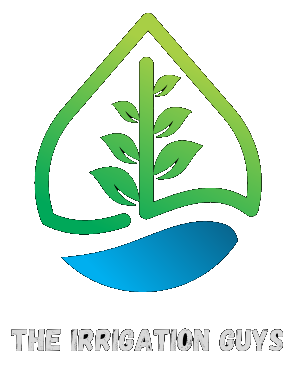Katy Resident's Guide to Irrigation Maintenance
Regular irrigation maintenance keeps your Katy lawn healthy and your water bills under control. A well-maintained system catches small problems before they turn into expensive repairs, adjusts for seasonal changes, and makes sure every zone gets the right amount of water.
Good maintenance means more than just checking if sprinklers turn on. It includes testing pressure, inspecting valves, clearing clogged heads, and adjusting timing based on weather and plant needs. Let me walk you through what proper maintenance involves and how it protects your investment.
What Does Regular Irrigation Maintenance Include?
Seasonal checkups form the foundation. Spring startups prepare your system after winter, checking for freeze damage, adjusting sprinkler heads, and testing all zones.
Each maintenance visit should include walking every zone while it runs. Technicians watch for uneven coverage, broken heads, leaks, and poor pressure. They adjust spray patterns to prevent water waste on driveways and sidewalks.
Controller programming gets reviewed and updated. Your watering schedule needs to change with seasons, rainfall, and plant growth. What works in April drowns your lawn by July without adjustments.
Fall winterization matters in Katy even though hard freezes are rare. Draining backflow preventers and insulating exposed pipes prevents damage during those occasional cold snaps that surprise everyone. Professional irrigation maintenance in Katy keeps systems running efficiently year after year.
How Often Should My System Be Serviced?
Plan for at least two visits annually—spring and fall. These seasonal checkups catch problems at critical times and prepare your system for upcoming weather changes.
Spring service focuses on startup and repair. Technicians check for winter damage, replace broken parts, and adjust settings for growing season. This prevents small issues from causing bigger problems during peak summer use.
Fall maintenance prepares systems for winter. Even in Katy's mild climate, occasional freezes damage unprepared systems. Winterization protects vulnerable components and ensures your system starts smoothly next spring.
Some homeowners add mid-summer checkups when systems work hardest. Peak heat stresses equipment and reveals problems that weren't obvious in spring. Extra attention during demanding months prevents unexpected failures.
What Are Signs My System Needs Attention?
Rising water bills signal problems. If usage climbs without explanation, hidden leaks are wasting water underground where you can't see them.
Uneven lawn health tells you something's wrong. Brown patches next to soggy areas mean some zones aren't working correctly. Proper maintenance catches these coverage issues before your grass suffers.
Reduced pressure affects all sprinkler heads. If water barely reaches where it should, you likely have valve problems, clogged filters, or mainline leaks. These issues get worse over time and need professional diagnosis.
Strange noises when the system runs point to valve problems or pressure issues. Hammering, grinding, or hissing sounds mean something needs repair. Ignoring these warning signs leads to expensive damage.
Can I Handle Maintenance Myself?
Basic tasks work for handy homeowners. You can clear debris from sprinkler heads, adjust spray patterns, and watch for obvious problems while your system runs.
Visual inspections help between professional visits. Walk your property during watering cycles and note any dry spots, pooling water, or equipment damage. Early detection saves money and prevents lawn damage.
However, some maintenance requires professional equipment and knowledge. Testing backflow preventers, diagnosing electrical problems, and adjusting complex controllers need specialized training. Professional irrigation system installation and maintenance in Katy ensures nothing gets overlooked.
The Irrigation Guys offers comprehensive maintenance plans that handle everything your system needs throughout the year. Call us at (281) 377-3123 to discuss which maintenance schedule fits your property best and keeps your lawn looking great in every season.
Katy's Clay Soil Impact on Irrigation Systems
Katy sits on heavy clay soil that behaves differently than sandy or loamy ground found in other areas. This affects how your irrigation system needs to work and what maintenance it requires.
Clay holds water much longer than other soil types. When you water clay soil, it takes time for moisture to penetrate deep enough to reach roots. Surface runoff happens easily if water applies too fast. Your system needs cycle-and-soak programming that applies water in short bursts with rest periods between them.
Clay also expands and contracts dramatically with moisture changes. During dry periods, soil shrinks and cracks, creating gaps that can damage buried pipes and shift sprinkler heads. Summer heat makes this worse, causing ground movement that affects system alignment.
Seasonal adjustments matter more in clay soil than other types. Spring brings softer, more receptive ground that needs less frequent watering. Summer demands careful attention to prevent both drought stress and overwatering that suffocates roots in dense clay. Fall maintenance should verify that ground movement hasn't damaged components or thrown spray patterns off target. Understanding these clay soil challenges helps you maintain a healthy lawn without wasting water or creating drainage problems around your foundation.
